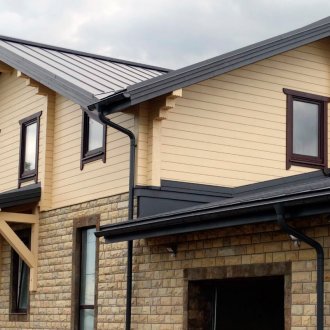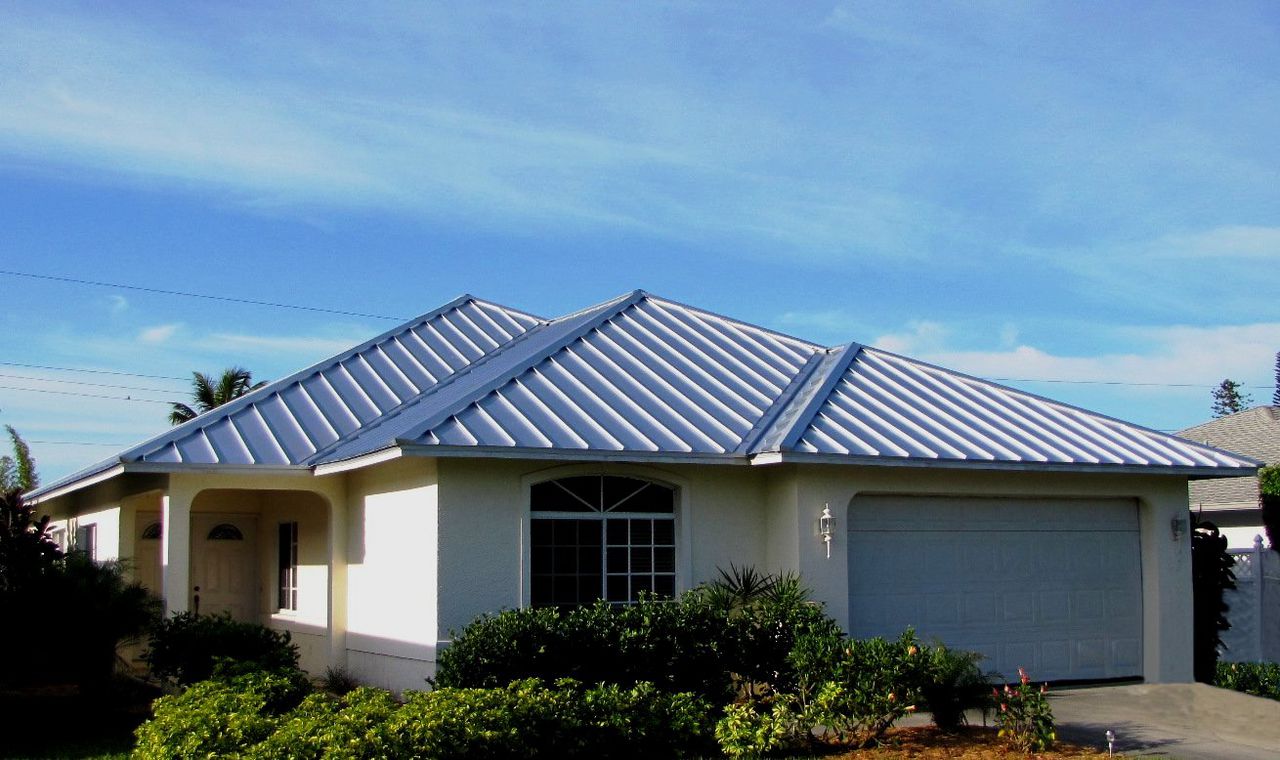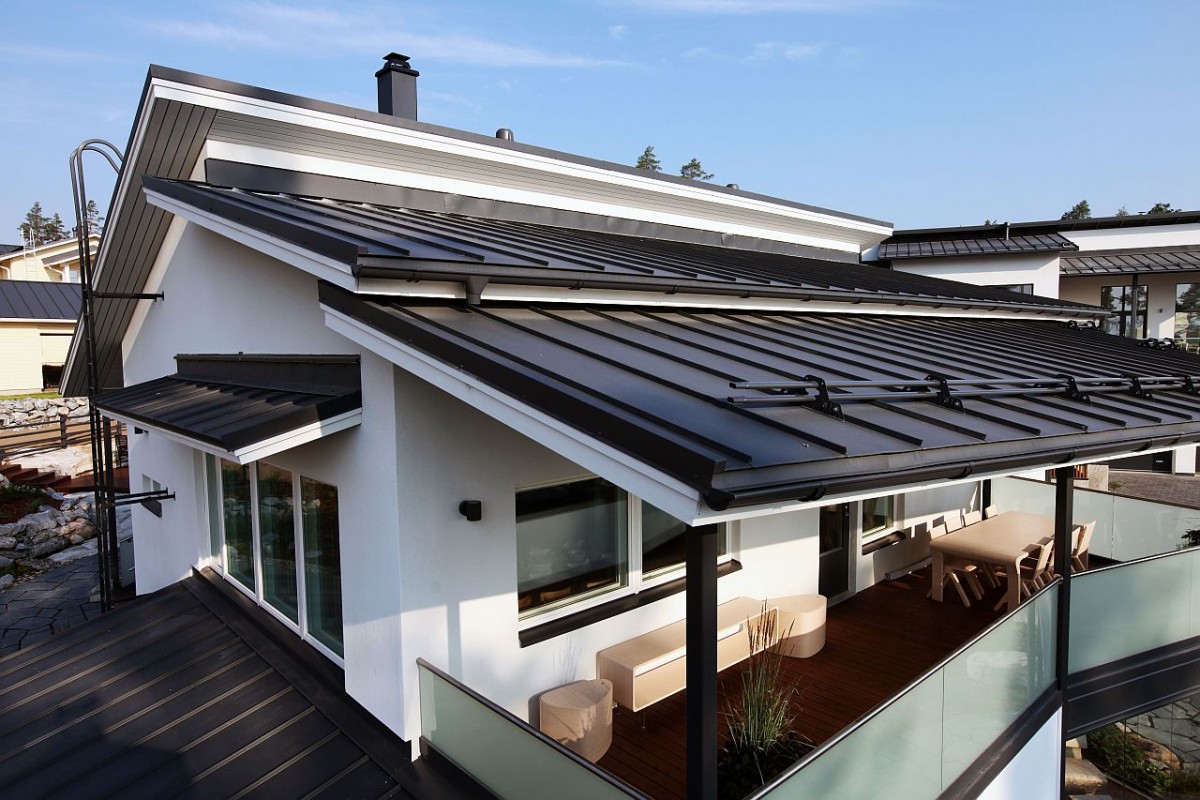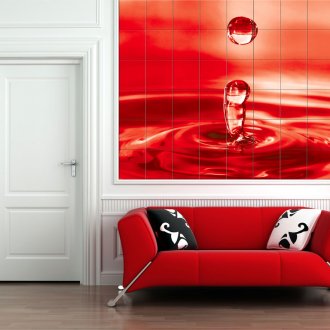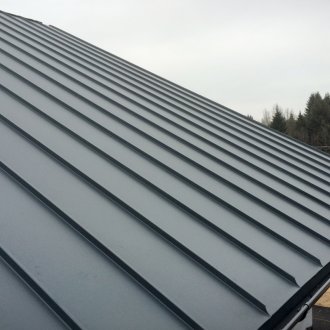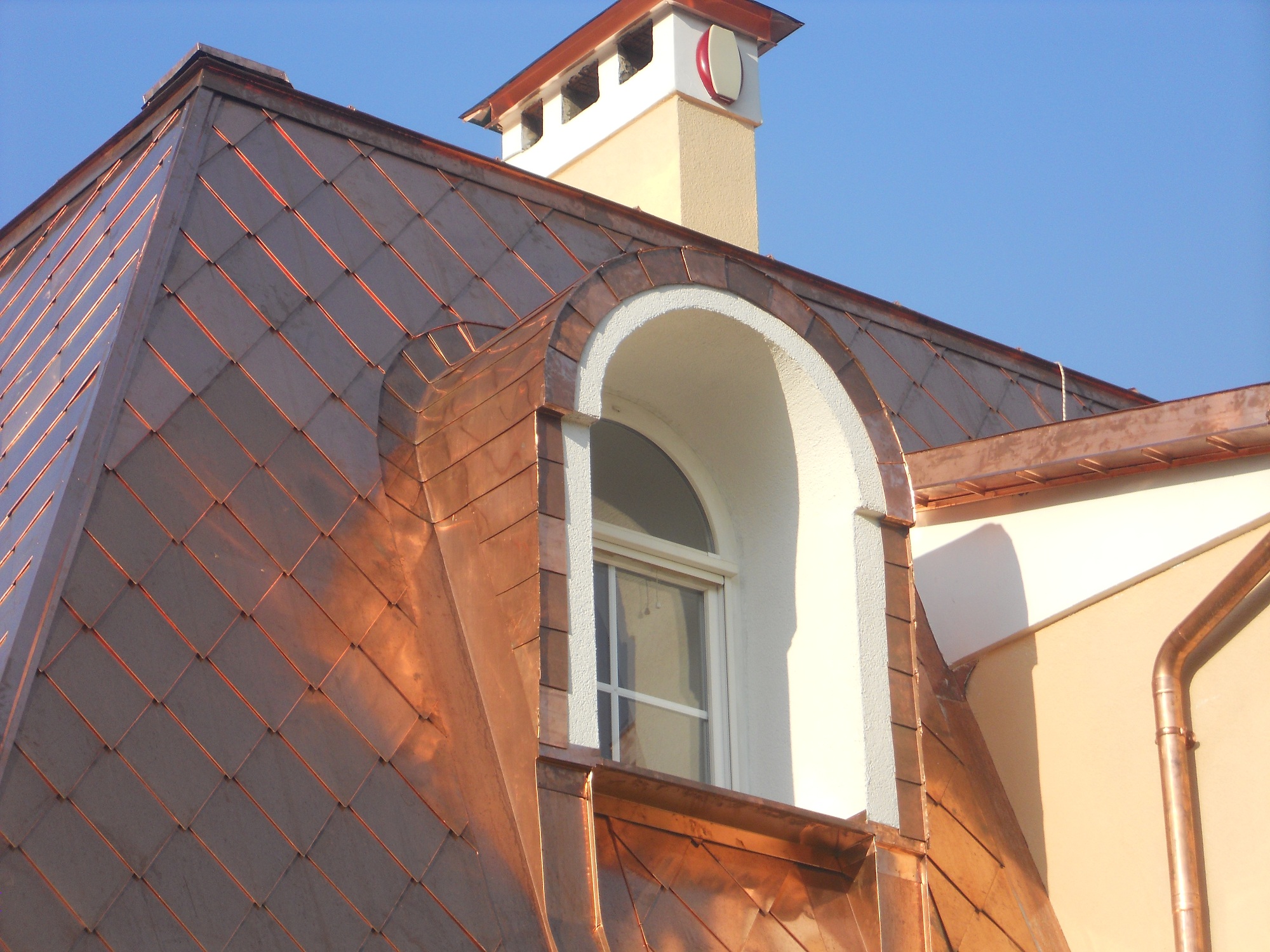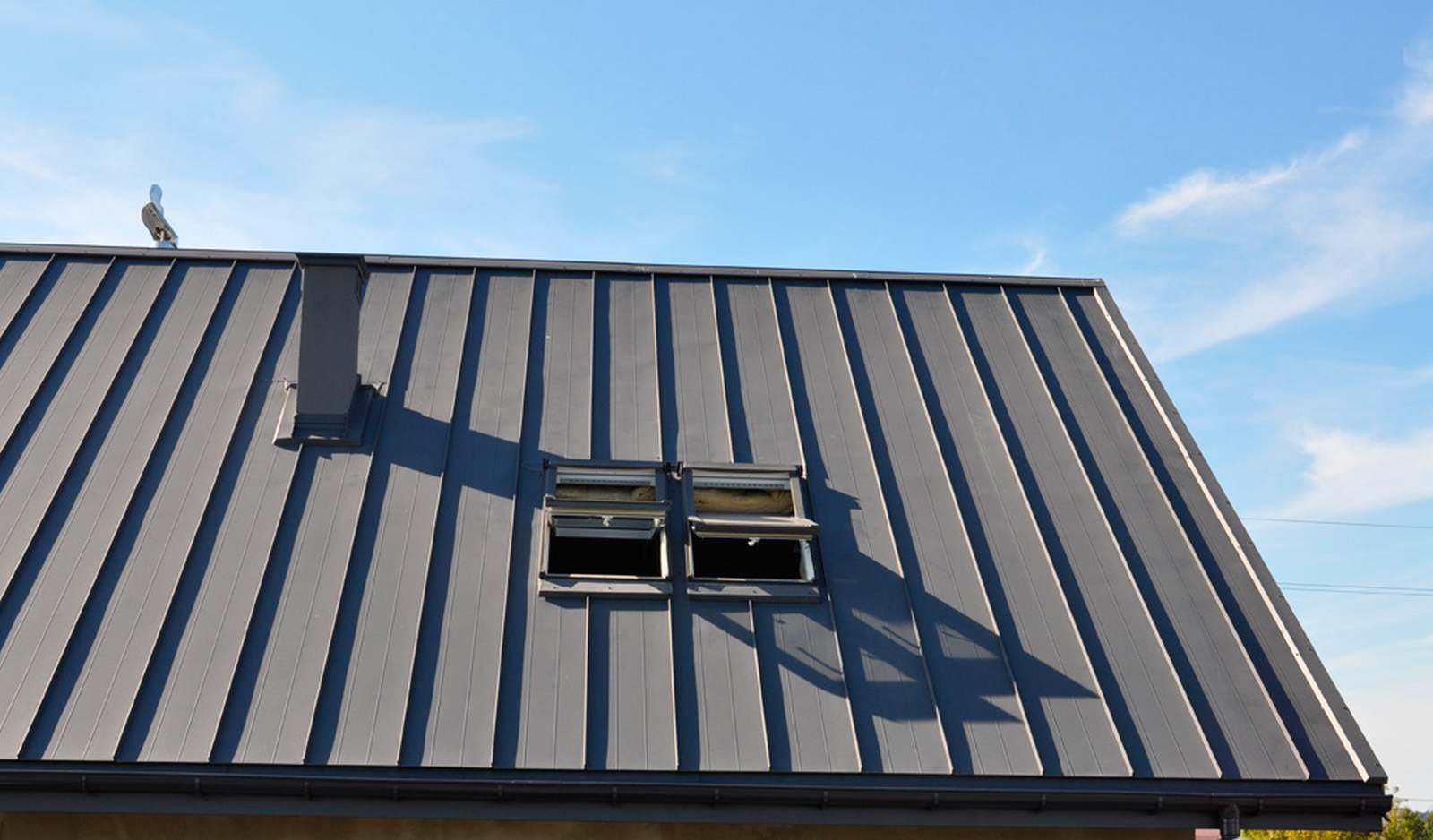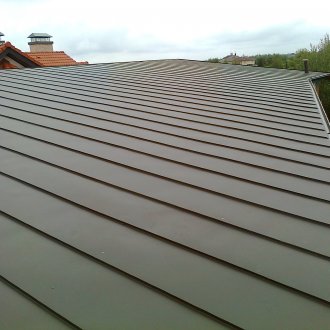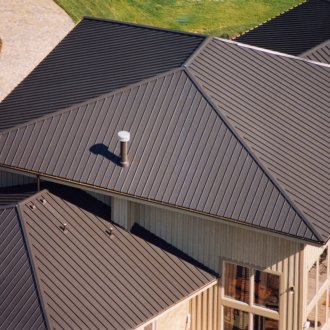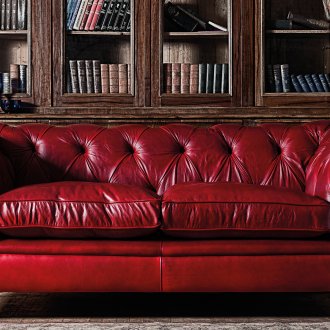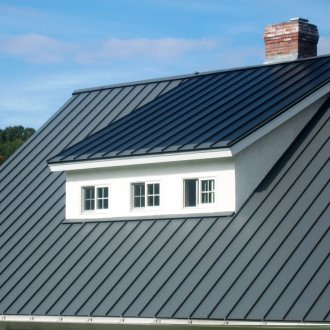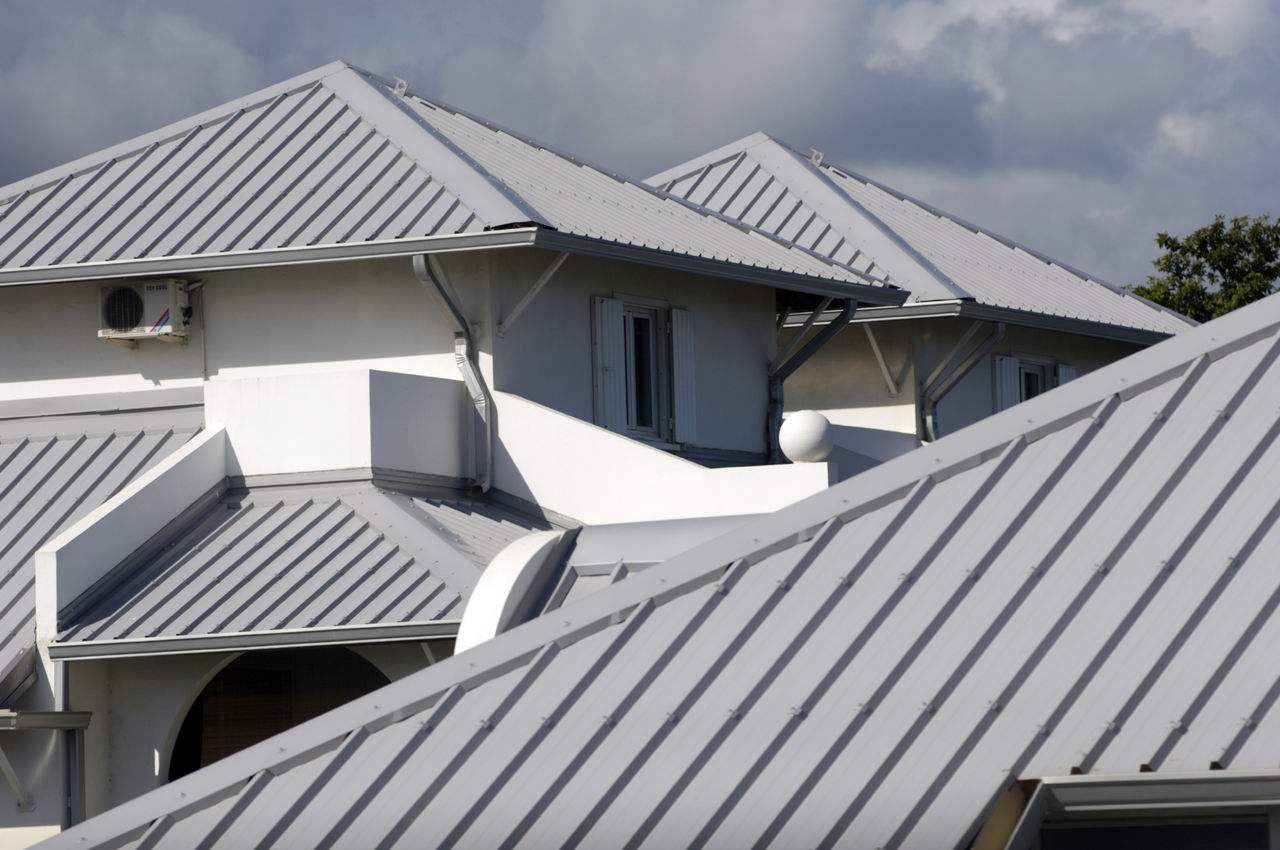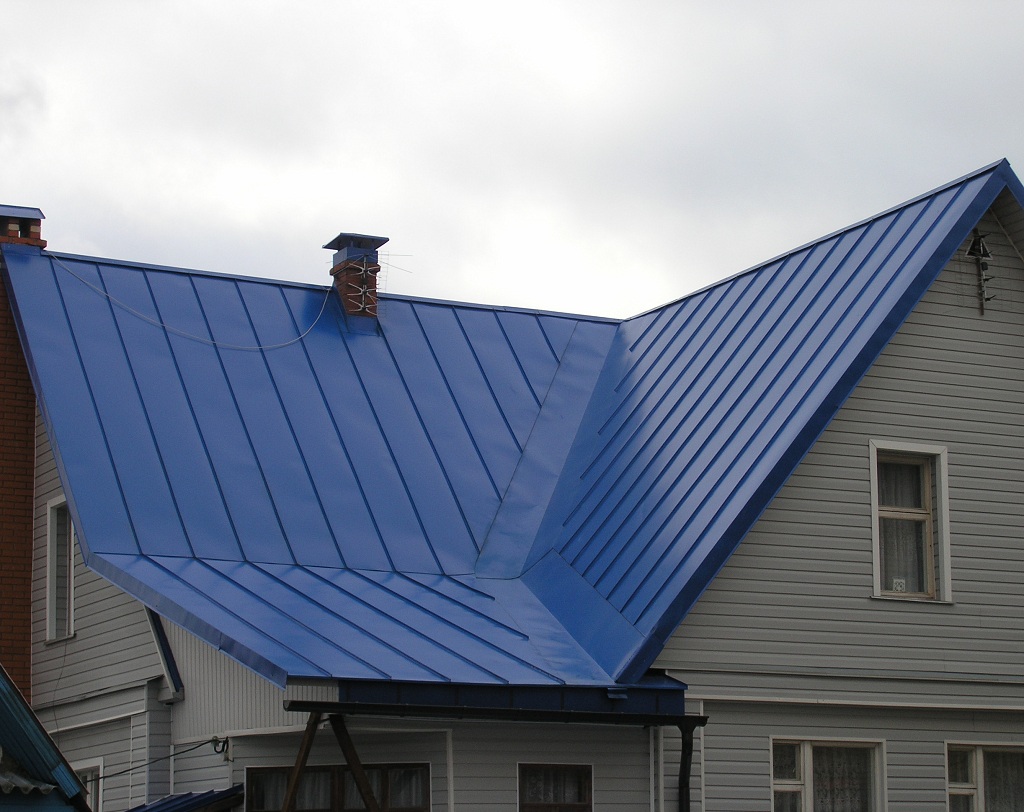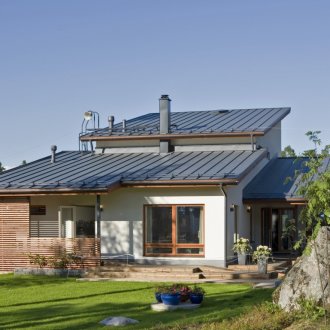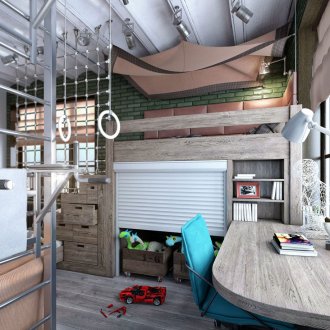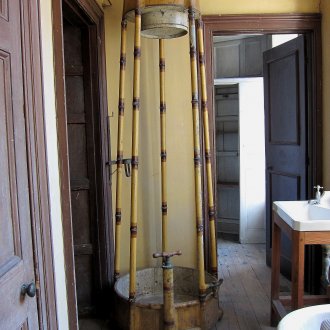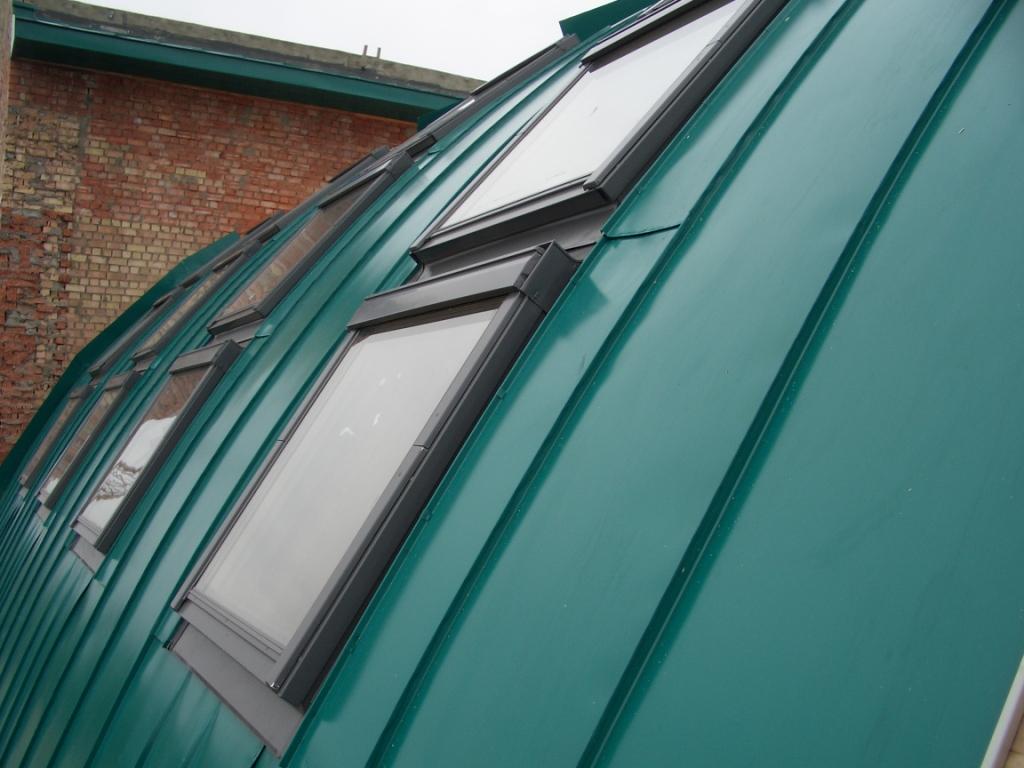The folded roof is an excellent solution for a non-standard roof (20 photos)
Content
Owners of suburban areas who decided to build a house with a rebate roof, rely on high wear resistance of the material: it is achieved through the use of the latest technology and proven alloys, as well as a wide range of surface protective compounds.
Specificity of joint formation
The roof components (the so-called paintings) are connected to each other by means of folds. Seam mounts are seams that occur during the joining of metal roof paintings. Seams can be single, double, standing (they are the most reliable, with their help fixed side and vertical roof panels), lying - they are designed for standard horizontal joining of sheets.
The snap-on seam types help significantly reduce the time allotted for installation work, moreover, they can be mounted on both the insulation and the crate. Such roof arrangements are applicable for utility and public buildings, cottages and country cottages.
Product classification by base material
In accordance with this criterion, the following types of seam roofs are given:
- galvanized seam roofs stand out from the competition due to the special coating, which gives the plates enhanced anti-corrosion properties. For installation, sheets are selected, the thickness of which varies between 45-70 mm, the operational life can reach 25-30 years;
- steel products with a polymer coating, has a multilayer structure, consists of a steel sheet coated with zinc, then comes the soil. The underside is treated with protective paint, and a colored polymer is applied to the front. The latter is necessary both for providing a decorative component, and for additional isolation of the material from UV radiation;
- a copper rebate roof can imitate masonry, tiles, it can be easily soldered, which significantly accelerates installation and serves as a guarantee of reliability and durability of products. Its service life exceeds 100 years;
- aluminum folded roofing can last up to 80 years, it does not deform, is resistant to seasonal temperature changes and severe winters;
- tapes or sheets of zinc-titanium alloy. The basis is modified zinc, thanks to aluminum, copper and titanium additives, the material is endowed with plasticity, it is not afraid of corrosion. Installation should be carried out at an ambient temperature of + 5 ° C, the operational life of such a roof reaches 100 years.
Strengths and weaknesses of roofing technology
The device of the folded roof can be an excellent solution, since it has a number of significant advantages:
- a specific system of connecting components ensures absolute tightness of joints;
- the durability of the metal coating, in particular, the service life of many variations reaches 100 years;
- a rich assortment of textures that can satisfy the needs of any architectural project;
- such a roof is not flammable;
- due to the light weight of the panels, installation work is accelerated and facilitated;
- the possibility of a complete arrangement of curly roofs with complex geometry;
- color scheme contains 50 shades;
- the paintings do not rot, do not form rust and do not change color.
Only 4 shortcomings of folded products were revealed:
- high thermal conductivity. To reduce their impact, it is necessary to strictly follow the installation technology and use high-quality insulation;
- it will be difficult for non-professionals to do the work themselves, it is advisable to attract a team of specialists;
- the material resonates perfectly, and therefore, the noise of the wind and precipitation will be very audible. The layers of vapor and waterproofing will help reduce conductivity and reduce discomfort;
- in order to level the likelihood of lightning falling into such a roof, which can accumulate a statistical charge, it is necessary to introduce a high-quality grounding system.
All the weaknesses of the seam roof are caused only by the natural properties of the metal, but modern installation techniques can minimize their manifestations.
Rules for laying sheet steel
This is the most common roof arrangement scheme; here, blanks are used, the operational properties of which were strengthened as a result of galvanization. Initially, paintings are formed - steel "semi-finished products" made in accordance with the drawings of the roof. So eaves overhangs, directly slopes, wall gutters are worked out. Parts are manufactured using marks applied to steel sheets. The cut canvases are connected with the help of folds into the paintings, the side faces are bent.
The formed paintings are delivered to the roof, fix them with each other by means of a single standing fold. It is important to take care of additional tightness, for this you can use a self-adhesive tape.
Further, the paintings are attached using narrow metal strips on the crate. Their one end goes into a standing fold on a bend, and the other goes into a frame. Thus, a high-quality design that does not have technological holes is obtained. Auxiliary connecting parts - bolts, clamps, nails, wire - are also made of galvanized steel, which guarantees their identical service life with a roofing.
Holes that inevitably form at gas and chimneys, including ventilation gaps, are covered with similar aprons. When arranging vertical seams of ordinary sheets, the interval between fasteners should not exceed 60 cm, the introduction of galvanized self-tapping screws is permissible here. Depending on the size of the slope of the slope, quantitative and qualitative indicators of the seams vary.
Advantages of working with a rolled seam roof
This material is supplied to the construction site in the form of rolls, already at the place it is cut using the appropriate equipment. In this case, horizontal seams are not formed through which water often seeps, despite all the additional waterproofing measures. Double standing folds are used to connect the paintings, the joints are sealed using silicone sealants.
Technology Advantages:
- for profiling of the roofing material directly at the construction site, a mobile rolling mill can be used;
- fastening to the crate is carried out using metalless hidden clamps - corrosion will not form in the places of such joints, full tightness is observed;
- there are no restrictions on the length of roofing sheets; it is possible to manufacture strips up to 100 m;
- fixing blanks to each other without transverse seams.
General recommendations for selection and installation
If it is decided to use folding technology, the roof slope should not exceed 14 °. If this indicator varies between 7-14 °, it is advisable to equip a solid base. Here, the recommended type of seam is a double seam supplemented with silicone sealant.
The sheet length most convenient for installation is no more than 10 m.If the dimensions of the workpieces are larger, the installation procedure should be supplemented with floating clamps.
When zinc-titanium is the key material, care must be taken to ensure that the workers handle the coating as carefully as possible - do not scratch or throw sheets, only soft pencils and markers are suitable for marking. If deep scratches occur, the risk of corrosion is high. For all manipulations with such products should be stocked with special roofing tools: hammers, shaped and straight scissors, marking devices, a set of bending pincers.
The considered roof is equipped either on a solid foundation or on a crate of beams of 50x50 mm, in this case the pitch between them is 250 mm. If the last indicator is not exactly met, this is fraught with deflection of the sheets, which, in turn, can cause weakening and deformation of the joints of the structure. Neglecting the rules causes corrosion and leaks.
Finally, homeowners purchasing roofing in rolls should monitor the uniformity of their thickness. Regardless of the type of coating, before purchasing it is necessary to familiarize yourself with the product certificate, which lists all the technical specifications of the sheets.
